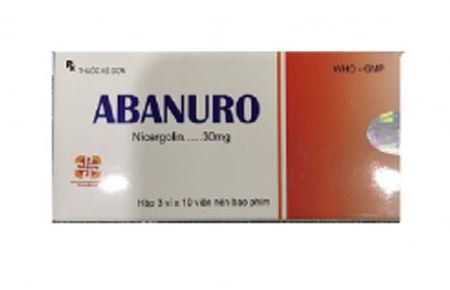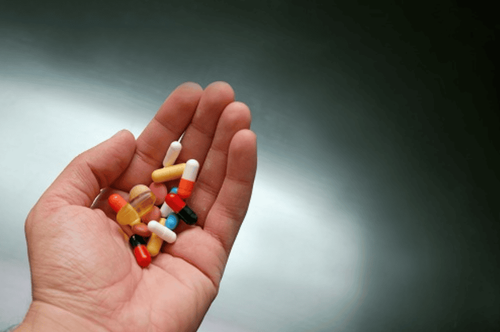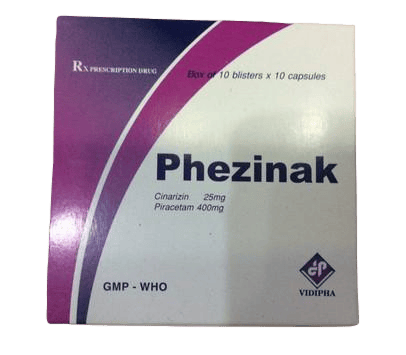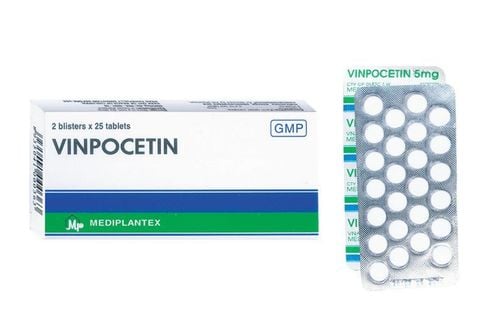This is an automatically translated article.
Ocepitam belongs to the group of psychotropic drugs with main ingredients including vincamine and rutin, which are often used to treat cerebral circulatory failure and support increased resistance of vessel walls.
1. What does Ocepitam do?
What does Ocepitam do? Ocepitam has the main ingredients vincamine and rutin with the following specific effects:Vincamine affects the metabolism of nerve cells by increasing oxygen consumption and reducing the lactate/pyruvate ratio. In addition, vincamin also increases blood flow to ischemic sites. In terms of pharmacokinetics, vincamine is absorbed and reaches a maximum concentration in the blood after 2 hours, and is finally eliminated by the kidneys with 5 metabolites and vincamine is not changed. Rutin is a bioflavonoid found in barley that can aid the body in absorbing vitamin C and act as an antioxidant that blocks free radical damage, reducing the risk of high blood pressure. Rutin is not only used for stroke prevention, but also for patients recovering from strokes and other hemorrhagic diseases by strengthening and restructuring damaged blood vessels. Ocepitam is usually prescribed in the following cases:
Supportive treatment of cerebral circulatory failure causing memory loss, loss of concentration ability Intellectual impairment due to pathology in the elderly Support increased vascular resistance with disease patients with sclerosis, hypertension, purpura, varicose veins Contraindications to Ocepitam include:
Brain tissue neoplasia with increased intracranial pressure Combined with antiarrhythmic drugs or causing torsades de pointes
2. Dosage of Ocepitam
Ocepitam is usually taken orally, the patient should take the drug while eating. Depending on the subjects and treatment goals, the dose of Ocepitam will be different with the average dose for adults is 1 tablet x 3 times/day.
3. Ocepitam side effects
In some patients when using Ocepitam, the following side effects may occur:
Headache Rash Gastrointestinal disorders Mild vegetative disorders
4. Be careful when using Ocepitam
Some general notes when using Ocepitam include:
When using Ocepitam for patients with sequelae of myocardial infarction and cardiac disorders, the dose of Ocepitam should be increased slowly and during treatment. ECG should be monitored. When in patients, euphoria is altered by hypokalemia, therefore treatment should be initiated only after the serum potassium has stabilized. Vincamine has no long-term antihypertensive effect and does not exempt specific treatment of hypertension.
5. Drug interactions with Ocepitam
Contraindicated drugs used in combination with Ocepitam include: drugs that cause torsades de pointes (amiodarone, bepridil, bretylium, disopyramide, erythromycin, quinidine group, sotalol, sultopride) because of the increased risk of torsades de pointes. Hypokalemic agents such as amphotericin B, tetracosactide, hypokalaemic diuretics, laxatives should be prevented from hypokalemia and adjusted if necessary, monitored QT, not antiarrhythmic drugs. For stimulant laxatives when co-administering Ocepitam, it is necessary to replace them with non-stimulant laxatives. Torsades de pointes when combined with Ocepitam increase the risk of torsades de pointes, so clinical and electrocardiographic monitoring is needed. Ocepitam belongs to a group of psychotropic drugs with the main ingredients of vincamine and rutin commonly used to treat cerebral circulatory failure and to support increased vascular wall strength. To ensure the effectiveness of treatment and avoid unwanted side effects, patients need to strictly follow the instructions of the doctor, professional pharmacist.
Follow Vinmec International General Hospital website to get more health, nutrition and beauty information to protect the health of yourself and your loved ones in your family.
Please dial HOTLINE for more information or register for an appointment HERE. Download MyVinmec app to make appointments faster and to manage your bookings easily.













